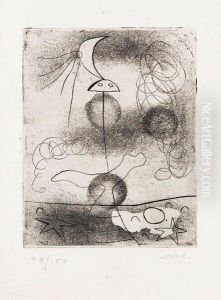Georges Paul Genisson Paintings
Georges Paul Génisson was a Belgian painter born in 1805, known for his skill in both portrait and historical painting. Despite his Belgian origins, much of his artistic career unfolded in France, where he became associated with the Romantic movement that was prevalent during the early 19th century.
Génisson received his formal art education at the Royal Academy of Fine Arts in Antwerp, which was a major center for artistic training in Belgium. He was a contemporary of other notable Belgian artists such as Gustave Wappers and Nicaise de Keyser, who also played significant roles in the Romantic art movement that swept through Europe.
His works were characterized by the Romantic movement's emphasis on emotion and individualism, as well as the glorification of the past and nature. Génisson was particularly adept at historical scenes, often imbuing them with a sense of drama and narrative. His portraits, on the other hand, were known for their detailed realism and psychological depth, which captured the character and social standing of his subjects.
Génisson's paintings were exhibited in various salons and exhibitions, gaining him a degree of recognition and acclaim among his contemporaries. However, he did not achieve the same level of fame as some of his peers. Today, his works can be found in various museums and private collections, and he is recognized for his contributions to the Belgian Romantic movement.
Georges Paul Génisson's career was cut short when he died in 1860. Though he did not live a long life by today's standards, his artistic legacy continues to be appreciated by art historians and enthusiasts, particularly in Belgium and France where he spent most of his professional life.
